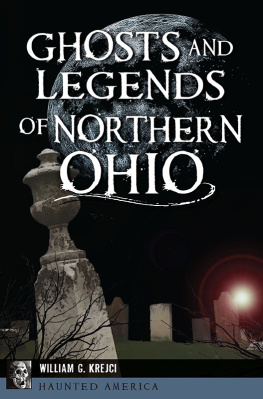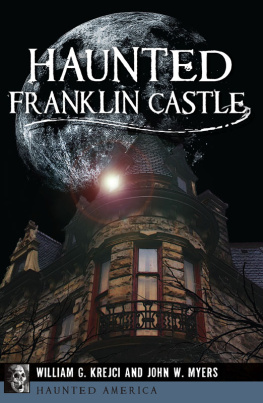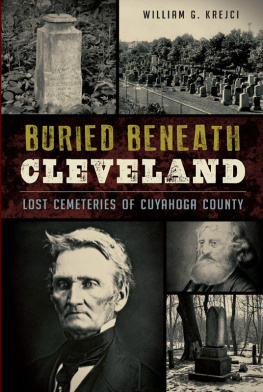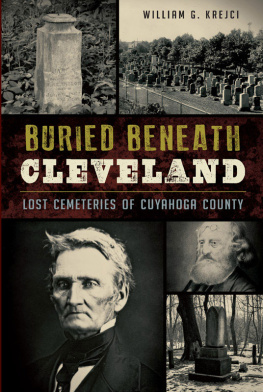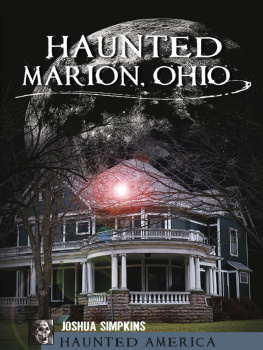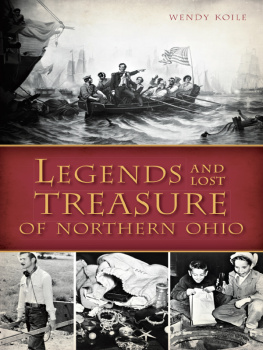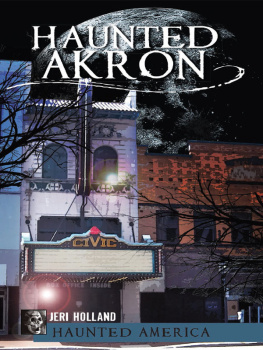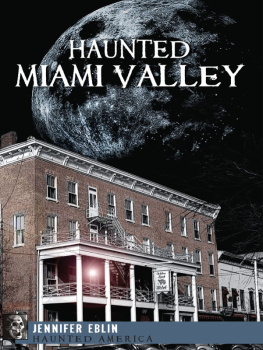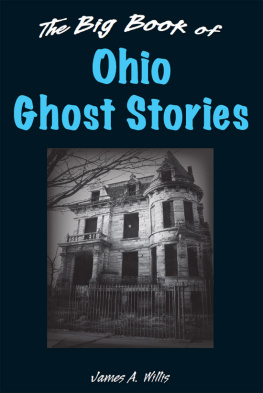

Published by Haunted America
A Division of The History Press
Charleston, SC
www.historypress.net
Copyright 2019 by William G. Krejci
All rights reserved
First published 2019
e-book edition 2019
ISBN 978.1.43966.798.9
Library of Congress Control Number: 2019943354
print edition ISBN 978.1.46714.144.4
Notice: The information in this book is true and complete to the best of our knowledge. It is offered without guarantee on the part of the author or The History Press. The author and The History Press disclaim all liability in connection with the use of this book.
All rights reserved. No part of this book may be reproduced or transmitted in any form whatsoever without prior written permission from the publisher except in the case of brief quotations embodied in critical articles and reviews.
CONTENTS
ACKNOWLEDGEMENTS
I would like to thank the following for their priceless contributions to this work. First and foremost, special thanks go to Ryan McCarbery, who joined me on almost every road trip and kicked around some wonderful ideas. Its a safe bet that this book wouldnt exist without his assistance.
I would also like to thank John Rodrigue, Ben Gibson, Sara Miller and the staff at The History Press; Randy Bergdorf; the Peninsula Library and Historical Society; Alison Lawson; Arrye Rosser; the National Park Service; Cuyahoga Valley National Park; Thomas A. Krejci; George and Mary Krejci; Jennifer Dobbins; Craig Whitmore; Christina Johnson; Jackie Smith; Matthew Rump; Chestnut Grove Cemetery; the City of Olmsted Falls; Charles Cassady Jr.; John Lewis; West Branch State Park; the Ohio Department of Natural Resources; Cassie Maiorana; Krista Horrocks; David Wright; Rich Tarrant; the Vermilion History Museum; Geoff Hanks; Julie Hanks; Sean Lavelle; Amy Mazzocco; Kim Anderson; James A. Willis; Gavin Esposito; Maren McKee; Tom Finnerty; Terry Lipply; the Ashtabula Public Library; Callyn Cooley; the Seneca County Museum; the Oberlin Heritage Center; the Cuyahoga Falls Historical Society; the Cleveland Public Library; Shane and Amy Moore; the Williams family; Wolf Creek Tavern; Susan Ebert and Westside Steve Simmons; the Lake County Recorders Office; the Summit County Recorders Office; the Richfield Historical Society; Darcy Miller and the Old Stone House Bed and Breakfast; Elaine Crane and the Riders Inn; Carl Thomas Engel; the Morley Library; the Sandusky Library; the Library of Congress; Valerie Renner; the Akron Civic Theatre; the Akron Beacon Journal and Ohio.com; Ray Hall; Ellen Herman; Tom Miller; and the Sandy and Beaver Canal Association.
INTRODUCTION
I was fourteen years old when I first heard the legend of Gore Orphanage. It was a fall afternoon in 1989, and a group of us were skateboarding in front of our friend Geoff s house when the subject of ghost stories came up. Another friend was telling us about a grave site that was said to be haunted by the ghost of the executed witch who was buried there. At this, Geoff related the story of Gore Orphanage, the haunted ruins of a childrens home in western Lorain County that met its end at the hands of a mad caretaker. When Geoff s mother returned home an hour later, she filled in the parts of the story that he couldnt remember.
That was it. I was hooked.
Up until that point, the only ghost story that intrigued me was that of the Franklin Castle in Cleveland. Discovering this new legend in my home county was exciting, to say the least.
Two more years passed before I saw Gore Orphanage Road in person. By that time, a slightly different tale surrounding the circumstances of the orphanages downfall was being told. It was hard to know what to believe. More than anything else, I just wanted to know the truth. Literature on the subject was greatly limited. Still, I decided that I would make every effort to uncover the true story behind this Northern Ohio legend.
Along the way, other tales of local hauntings were passed along to me. More and more, I was hearing stories of witches graves and crybaby bridges. It seemed like every county had one. I wondered if there was a shred of truth to any of it. My career as an investigative historian was born out of this.
The unfortunate thing is that sometimes you end up bursting peoples bubbles. After all, truth is the goal, not perpetuating and regurgitating the falsehoods that have been passed along for years. By shedding light on these stories, we sometimes kill our favorite legends. Im quite sure that I wont make many friends by writing this book.
I should state at the onset that Im not out to debunk any hauntings. Besides, thats impossible. With the exception of someone coming forward and admitting that they made the whole thing up, I can no more debunk a haunting than I can prove it. I can tell you that a place is haunted until Im blue in the face, but that doesnt necessarily make it so. Its not proof.
Thats not the purpose of this book, anyway. What I intend to do is share these ghostly legends and reveal their true backstories. Along the way, we may even stumble upon the origins of the legends. These tend to be hidden in newspaper articles published around the time of the events that play into the original stories. Some mysteries will be solved, and a few forgotten mysteries will be rediscovered. This book wont disappoint in either of these regards.
Also, just as its impossible to prove or disprove a haunting, the same can be said of identifying or putting a name to a ghost that haunts a location. Of course, guesses can be made. We tend to base these on people who met tragic ends at these sites, but again, it doesnt make it so.
Some of the stories that follow will be familiar. Some will be, well, not-so-familiar. What you wont see are stories of Ohio Sasquatch, alien encounters or tales of Melon Heads. Im not a cryptozoologist. Alien encounters arent ghostly urban legends. The idea of a woodland-dwelling colony of hydrocephalic cannibal dwarfs living near Kirtland is preposterous, despite what your uncles friend says he saw out there in 1986. You get the picture.
CHAPTER I
HELLTOWN
A LEGEND RETOLD
Whenever the topic of Northern Ohio ghostly legends is brought up, it isnt long before someone starts talking about a place called Helltown. There are a multitude of stories attached to that location, thus it seems like a great starting point for this book.
Nestled in the winding Cuyahoga Valley sits an abandoned town that has become the subject of ghostly legends and government conspiracies. Rumors tell of a toxic waste spill that spurred the government to force mass evacuations. The disaster, its said, was covered up with the development of a national park. Further tales speak of an abandoned school bus where children are said to have been viciously murdered. A Satanic cult is said to hide behind the guise of a Catholic church. A haunted house sits alone and deserted in the woods, yet a light is always seen at night. Stories are told of a spectral hearse that prowls an abandoned road, gathering souls to usher into hell, and an old slaughterhouse near the graveyard is suspected as a hotbed of ghostly activity. Not surprisingly, Helltown is also said to harbor a crybaby bridge and at least two haunted cemeteries.

One of the signs placed on the boarded-up homes in the Cuyahoga Valley.
Next page
